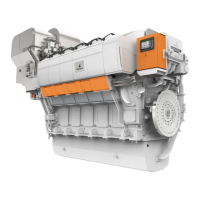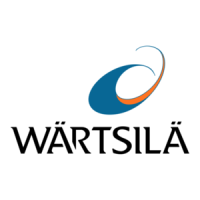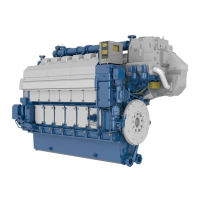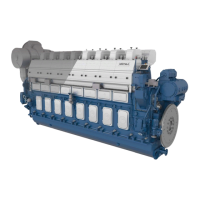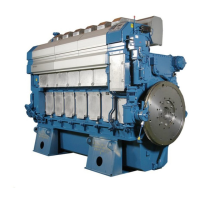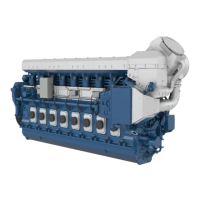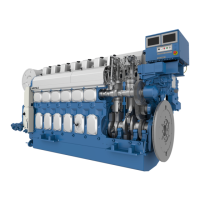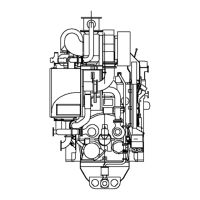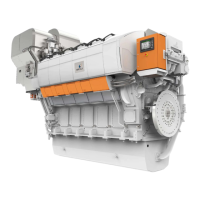
Do you have a question about the Wartsila 31 and is the answer not in the manual?
Rating table for Wärtsilä 31 showing engine and generator outputs.
Defines acceptable operating limits and speed ranges for the engine.
Details recommended load increase rates for mechanical and diesel-electric propulsion.
Presents detailed technical specifications for the Wärtsilä 8V31 engine.
Provides detailed technical specifications for the Wärtsilä 10V31 engine.
Details technical specifications for the Wärtsilä 12V31 engine.
Outlines technical specifications for the Wärtsilä 14V31 engine.
Lists technical specifications for the Wärtsilä 16V31 engine.
Details the primary components and systems of the Wärtsilä 31 engine.
Provides guidance on overhaul intervals and expected component lifetimes.
Defines fuel specifications based on ISO 8217 and other properties.
Illustrates the internal fuel oil system with component and sensor lists.
Details the external fuel system design, treatment, and tank requirements.
Presents the MDF fuel oil system diagram for a single main engine.
Presents the HFO fuel oil system diagram for a single engine.
Specifies requirements for engine lubricating oil, including viscosity and alkalinity.
Illustrates the internal lubricating oil system with component and sensor lists.
Presents the external lubricating oil system diagram for dry sump engines.
Defines the required quality specifications for instrument air.
Describes the engine starting system using compressed air.
Details the design and requirements of the external compressed air system.
Specifies the required quality parameters for fresh water in the cooling system.
Illustrates the internal cooling water system for 8V-10V engines.
Addresses challenges and requirements for cooling water systems in arctic environments.
Illustrates the internal exhaust gas system with component and sensor lists.
Details the design factors for external exhaust gas systems.
Details the turbine cleaning system, including dosing unit and water supply.
Explains that the compressor side is cleaned using the same equipment as the turbine.
Describes the components of diesel engine exhaust emissions.
Covers marine exhaust emission control regulations, primarily IMO.
Discusses primary and secondary methods for reducing exhaust emissions.
Provides technical data on the UNIC automation system and its modules.
Explains core engine functions like starting, stopping, and speed control.
Explains the engine start procedure, including local/remote and emergency starts.
Describes normal and emergency stop procedures and safety shutdowns.
Details electronic speed control for main engines and generating sets.
Provides guidelines for propulsion control and power management systems in diesel-electric ships.
Covers methods for mounting main engines, including rigid and resilient types.
Explains resilient mounting for generating sets on base frames.
